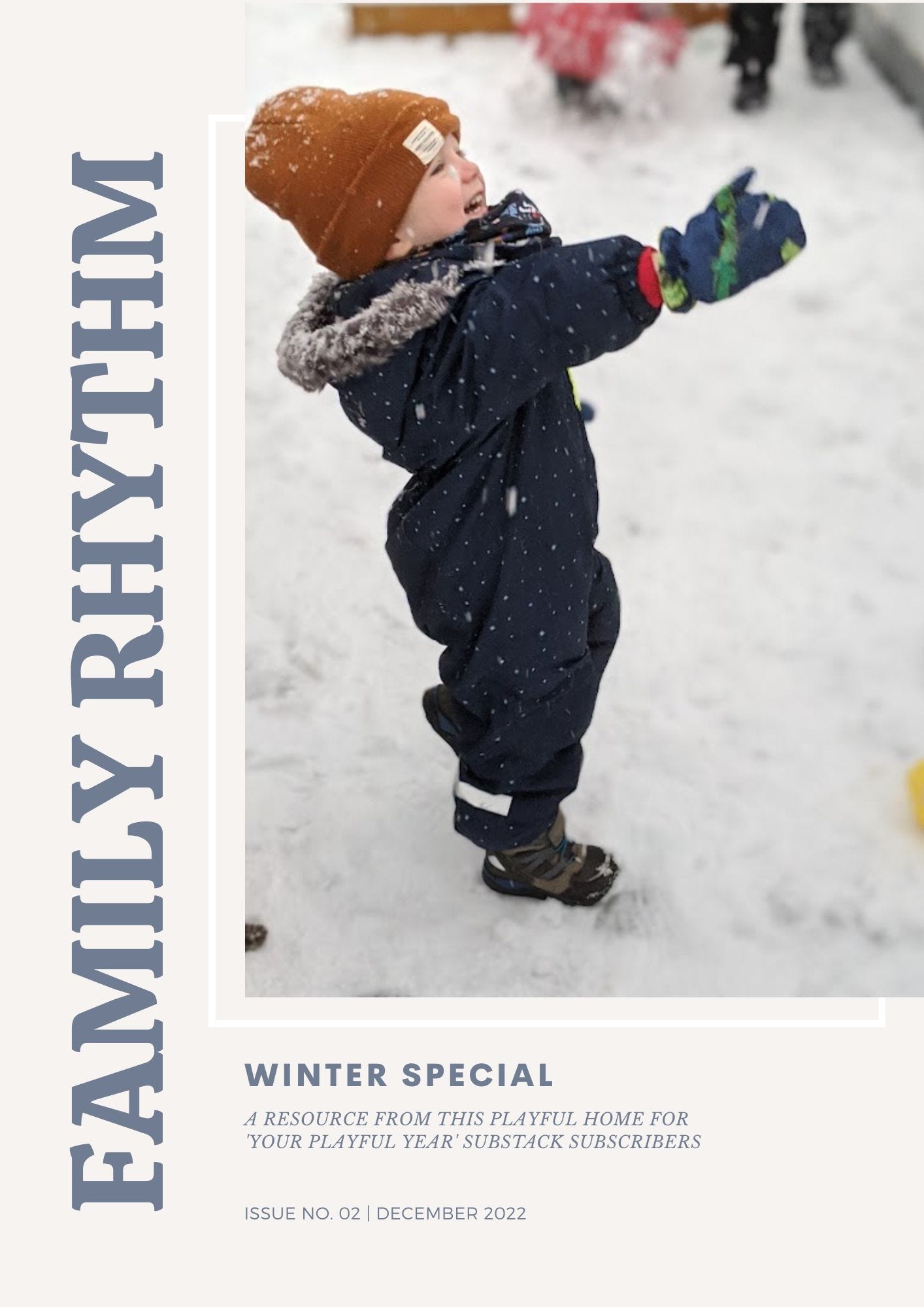Welcoming Winter
Family Rhythm during the Winter Months
We like to live our lives by each season. Dividing our rhythms up in this manner helps us to feel fully present, connect with nature and allows us to spend time together as a family doing the things we love to do. Without a rhythm, winter can feel particularly hard but with a rhythm, there’s the opportunity to fully embrace everything the coldest season has to offer - and no, I’m not just focusing on Christmas.
The Winter months in Vienna do have a magical feel, especially when the famous Christmas markets arrive. The streets are full of people from all over the world, the light displays are beautiful and there’s plenty of opportunities to get immersed in Austrian winter traditions from ice skating to winter hiking (or even snowshoeing). It is living in Austria that has taught me and my family to fully appreciate all seasons and not just the ones with more favourable weather!
I personally count winter from December 1st, which is why this Winter Rhythm Special is being released now at the end of November.
How you mark the seasons will depend on whether you follow the astronomical or meteorological winter. According to the Met Office:
This year, astronomical winter begins on 21 December 2022 and ends on 20 March 2023. By the meteorological calendar, the first day of winter is always 1 December; ending on 28 (or 29 during a Leap Year) February.
metoffice.gov.uk
The Importance of Family Rhythms
Family rhythms are a core part of the This Playful Home philosophy. Following daily, weekly and seasonal rhythms at home have made us feel less overwhelmed and more connected to one another.
A family rhythm provides a predictable pattern to the days, weeks and seasons. Whilst it is done in an intentional manner, it is separate from a timetabled routine.
A timetable tends to make people feel stressed and hurried whereas a rhythm is a gentle flow.
The concept of a rhythm originally comes from the Waldorf philosophy of education. Rhythms can be used in education, but we are focusing on rhythms for the family and home.
I first decided to implement a family rhythm at home when my youngest son was born. After a bought of illness during the fourth trimester and my nearest family members living over 9000 miles away, I had to take action.
Implementing a gentle family rhythm meant that we all felt less stressed, more connected and we could go through each day with real intention.
What You’ll Learn in this article:
Why we put so much emphasis on seasonal rhythms
How to slow down and simplify during the busiest season
Your Family Rhythm in Winter + what to include
Adjusting your weekly rhythms for the new season
Adjusting your daily rhythms for the new season
+ Family Rhythm: Winter Special downloadable workbook
What do you receive as a paid subscriber?
Access to this Seasonal Rhythm Guide and the printable workbook
Access to newsletters in the monthly masterclass series
Printable resources
Journal prompts and reflection questions
Access to the Playful Prompts library
New masterclass topics every month
Access to community discussion boards
This newsletter is part of the paid subscription. To access the content, including printable resources and guides, please click the link below.





